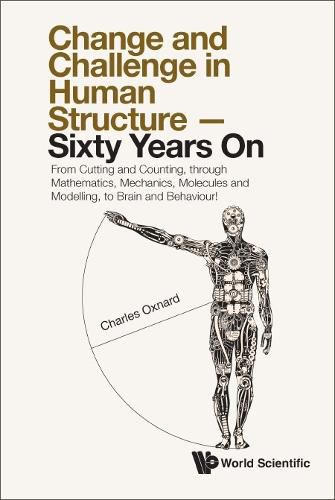Readings Newsletter
Become a Readings Member to make your shopping experience even easier.
Sign in or sign up for free!
You’re not far away from qualifying for FREE standard shipping within Australia
You’ve qualified for FREE standard shipping within Australia
The cart is loading…






Regarded by many as a dead or simply dull subject, Change and Challenge in Human Structure - Sixty Years On shatters this prejudice with a series of studies that go beyond dissection and measurement and covers novel approaches to anatomical form. Award-winning anatomist Charles Oxnard takes us on an exhilarating ride: beginning with rudimentary dissections and the fascinating observation of 'missing muscles', we are led on naturally to statistical analysis of bone measurements and how they may give information about bone function. Engineering methods and pattern recognition are introduced next, as a means of studying the external shape and internal structure of bones, respectively, and their relation to mechanical function. The application of landmark analysis to anatomy, also known as geometric morphometrics, is given a full chapter treatment. Finally, Oxnard uses modelling techniques to skilfully lay out an argument for the uniqueness of human brains and new possibilities in human evolutionary theories, both past and future. This book offers nothing less than a paradigm shift in our understanding of one of the oldest fields of science, and leads us into new views of the functional, developmental, behavioural, genetic and evolutionary implications of anatomical studies.
$9.00 standard shipping within Australia
FREE standard shipping within Australia for orders over $100.00
Express & International shipping calculated at checkout
Regarded by many as a dead or simply dull subject, Change and Challenge in Human Structure - Sixty Years On shatters this prejudice with a series of studies that go beyond dissection and measurement and covers novel approaches to anatomical form. Award-winning anatomist Charles Oxnard takes us on an exhilarating ride: beginning with rudimentary dissections and the fascinating observation of 'missing muscles', we are led on naturally to statistical analysis of bone measurements and how they may give information about bone function. Engineering methods and pattern recognition are introduced next, as a means of studying the external shape and internal structure of bones, respectively, and their relation to mechanical function. The application of landmark analysis to anatomy, also known as geometric morphometrics, is given a full chapter treatment. Finally, Oxnard uses modelling techniques to skilfully lay out an argument for the uniqueness of human brains and new possibilities in human evolutionary theories, both past and future. This book offers nothing less than a paradigm shift in our understanding of one of the oldest fields of science, and leads us into new views of the functional, developmental, behavioural, genetic and evolutionary implications of anatomical studies.